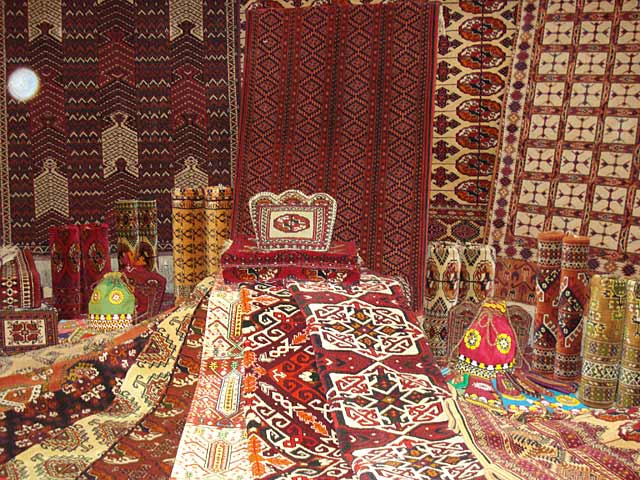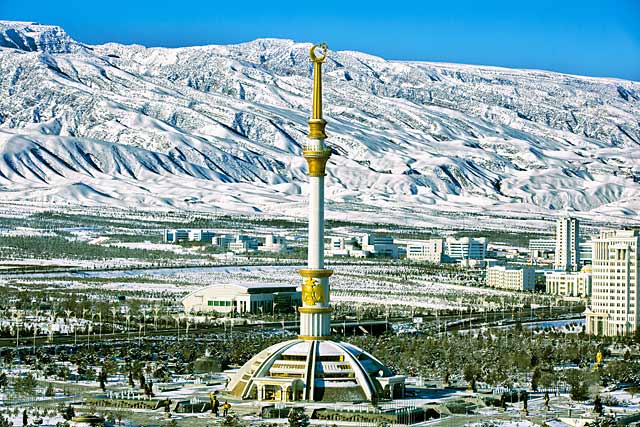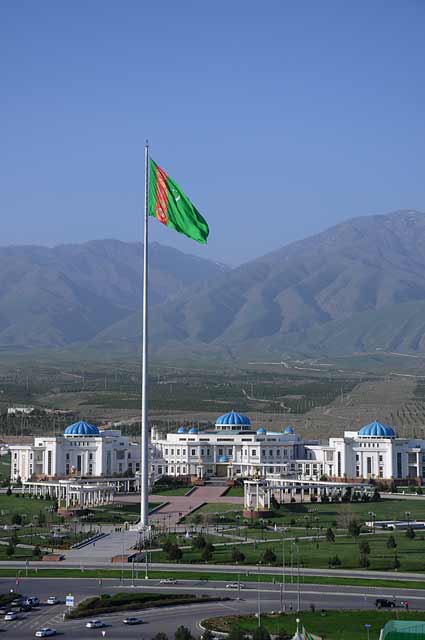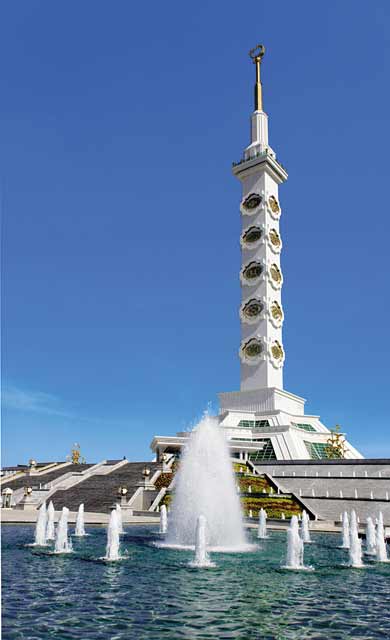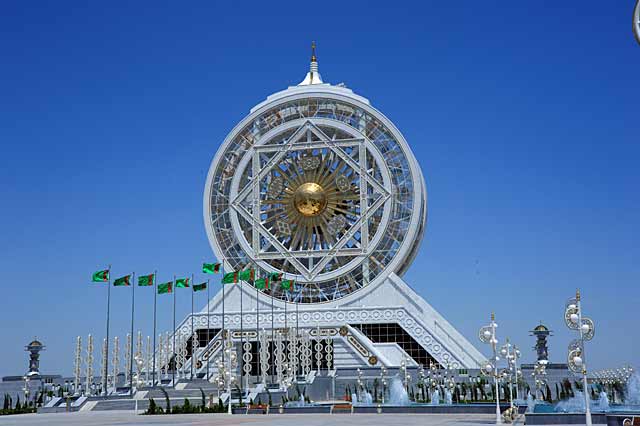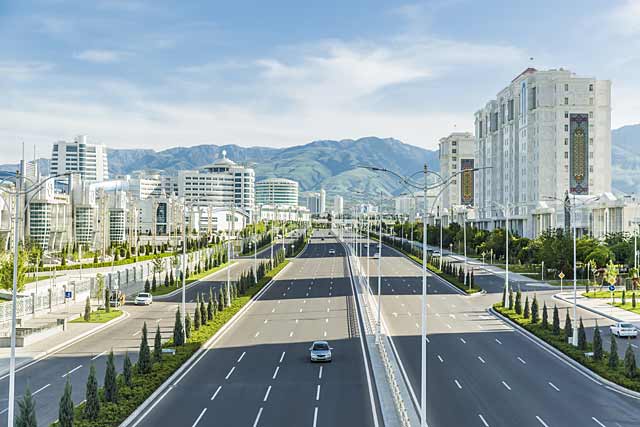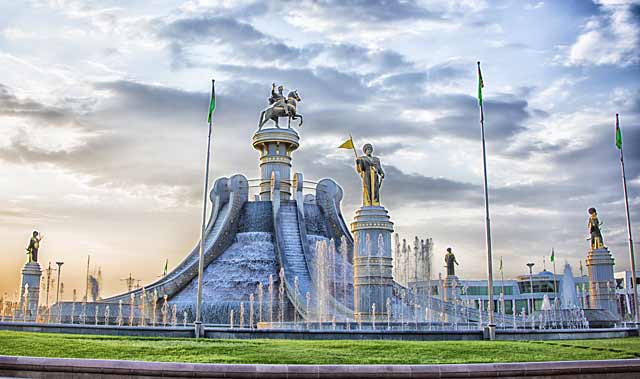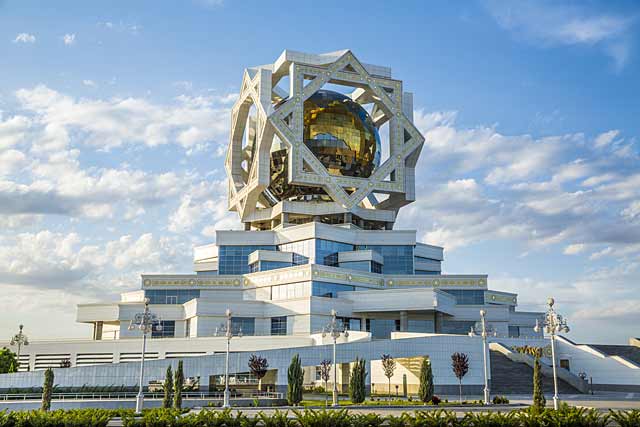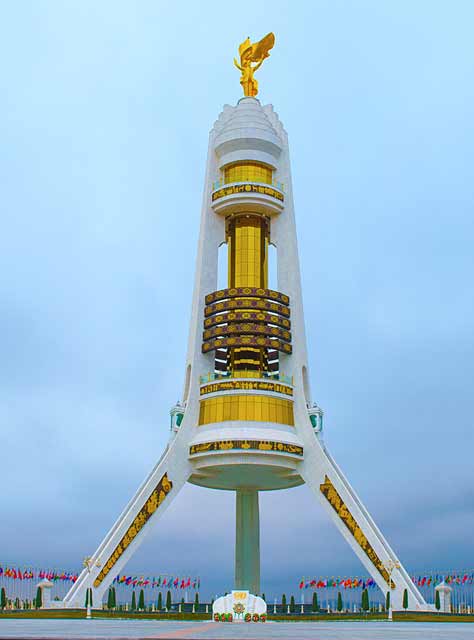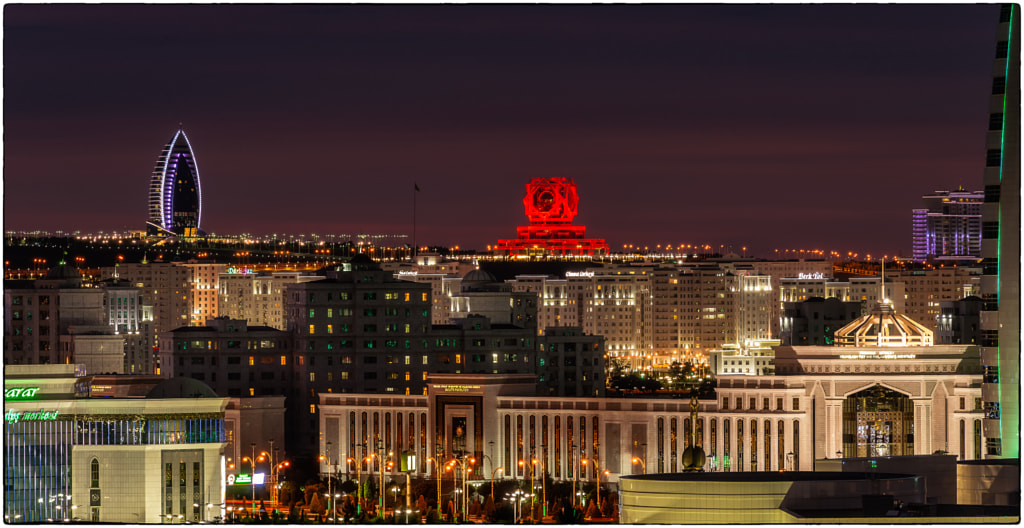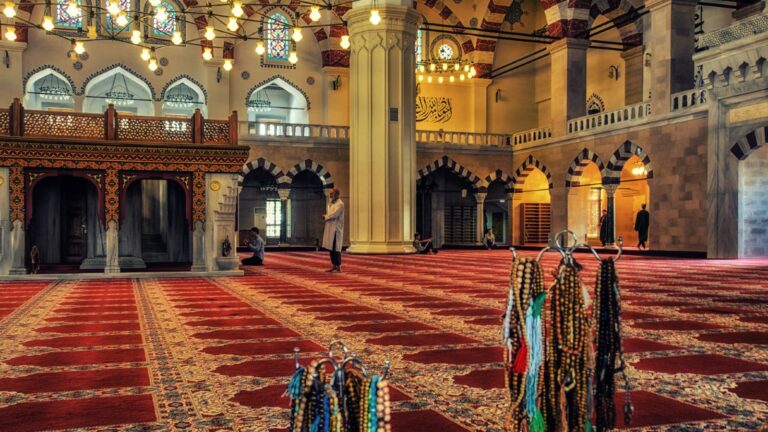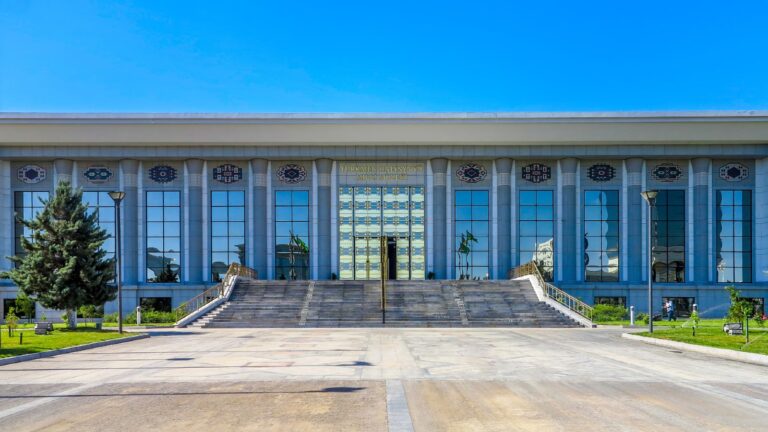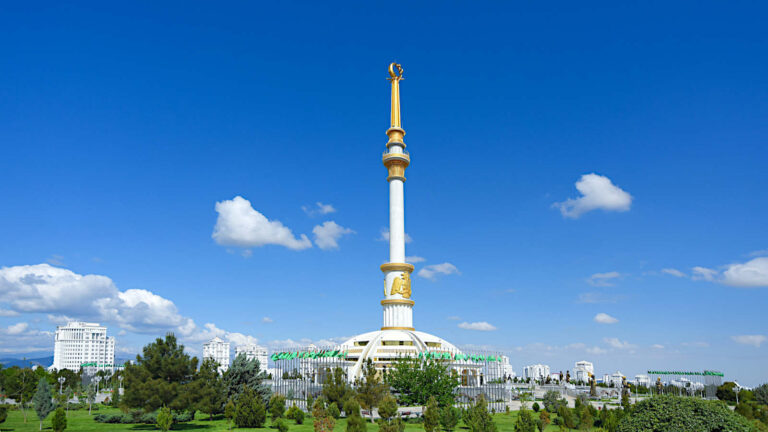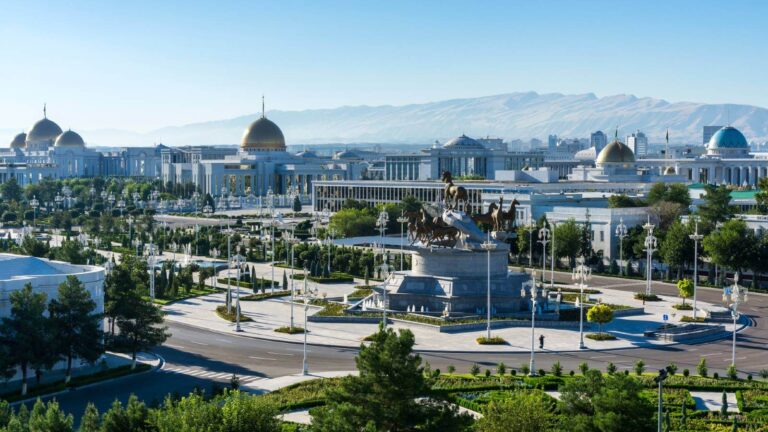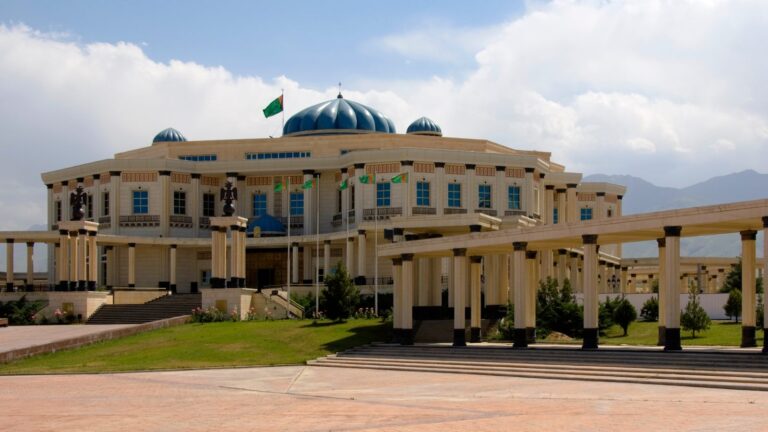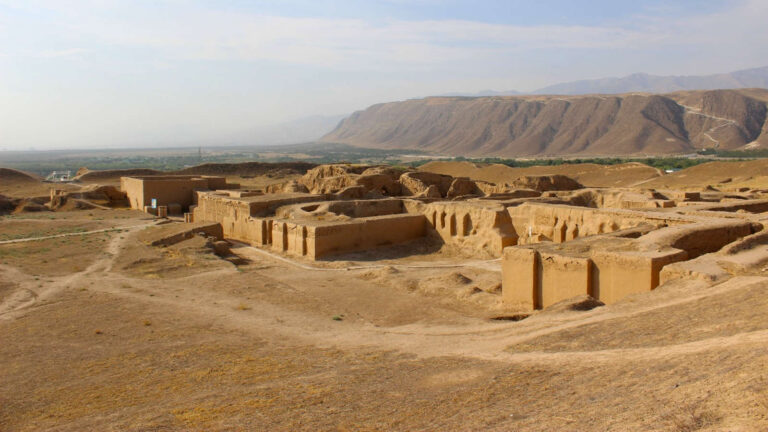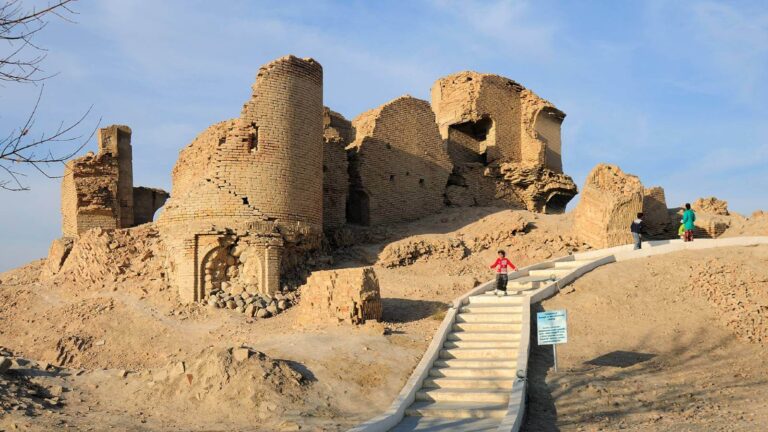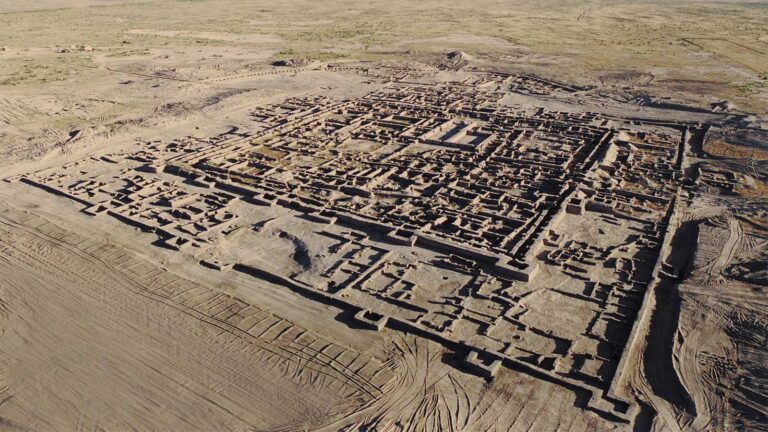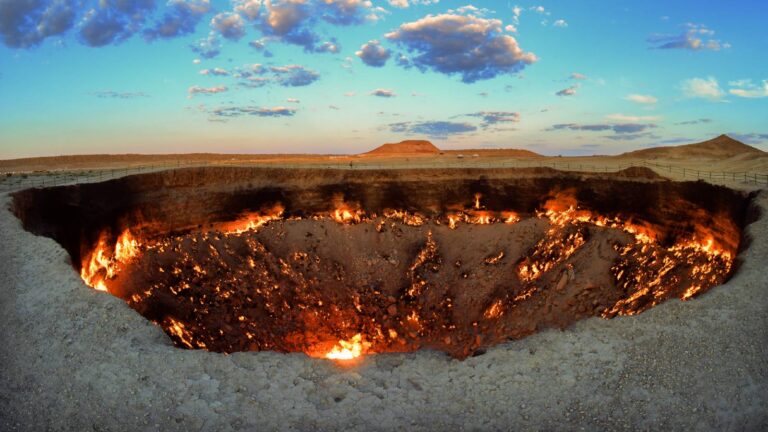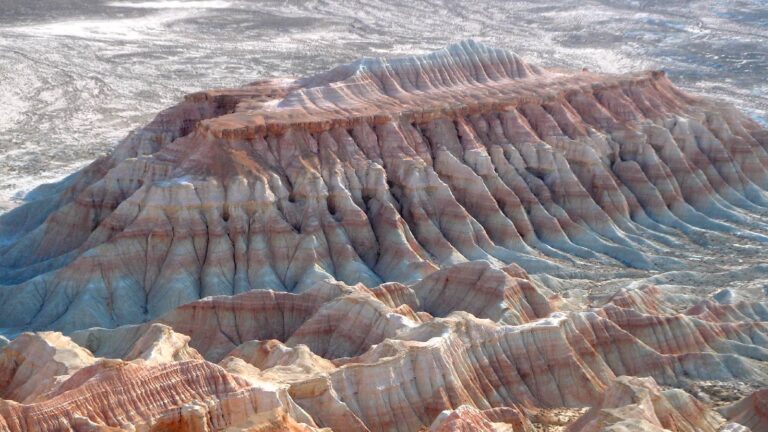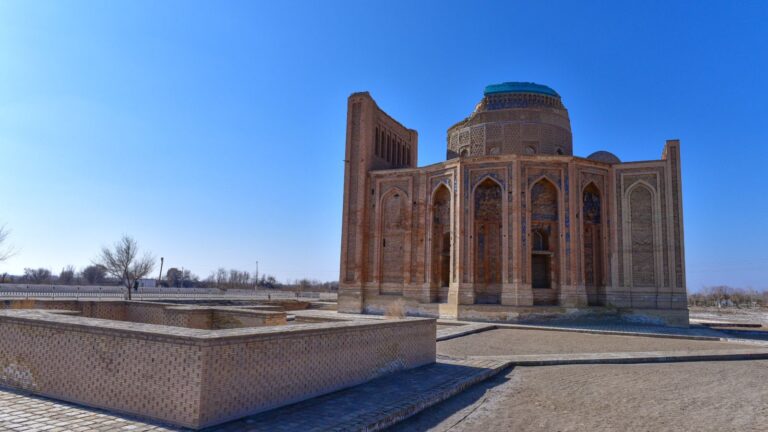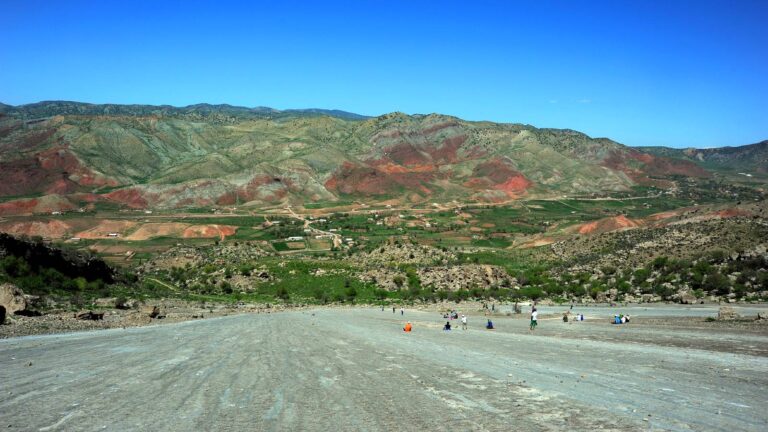The easiest and fastest way to get to the region is by flying into Ashgabat International Airport, which serves both domestic and international flights. From the airport, travellers can easily access the city of Ashgabat and explore the surrounding region.
Turkmenistan has a network of highways and railways, all leading to Ashgabat as its central hub. As the country’s transport hub, it is easy to find a rail or bus connection to Ashgabat.
Ashgabat is home to several noteworthy landmarks. The Independence Monument, a towering structure celebrating Turkmenistan’s independence, is a prominent symbol in the city. The Turkmenistan Tower offers panoramic views of Ashgabat and its surroundings. The National Museum of Turkmenistan showcases the country’s rich history and culture, and the Turkmen Carpet Museum highlights the traditional art of carpet weaving.
The Arch of Neutrality rises at the foot of the Kopetdag Mountains and is topped with a golden statue of Turkmenistan’s first president.
The Alem Cultural and Entertainment Center includes the world’s largest indoor Ferris wheel.
The Russian Bazaar is a bustling market with a wide range of goods on offer, including fresh produce, spices, textiles, handicrafts, and more. It’s a great place to pick up souvenirs.
While the presidential palace itself is not open to the public, the complex represents the seat of power in Turkmenistan and is a sight to behold.
Ashgabat, including Nisa, was strategically located along the ancient Silk Road trade route. This facilitated the exchange of goods, ideas, and cultures between the East and the West, contributing to the region’s prosperity and cultural diversity.
Nisa was the capital of the Parthian Empire, a powerful Iranian civilization that existed from the 3rd century BCE to the 3rd century. Its ruins nearby Ashgabat are a UNESCO World Heritage Site.
The region is renowned for its prized Akhal-Teke horses, a rare and ancient breed known for their elegance, endurance, and unique colour. These horses have played a significant role in Turkmen culture and are highly revered for their beauty and agility.
Ashgabat city boasts modern equestrian facilities, including riding schools, training centese, and stud farms. These facilities cater to horse enthusiasts, offering riding lessons, guided tours, and opportunities to interact with Akhal-Teke horses. Horse racing events, such as the Turkmen Horse Day, showcase the region’s passion for equestrian sports and traditional horsemanship.
Horses hold a special place in Turkmen culture, symbolising strength, freedom, and nobility. Traditional Turkmen music, dance, and poetry often pay tribute to the beauty and spirit of horses, emphasising their importance in the region’s folklore and identity.
The city is situated in the southwestern part of Turkmenistan, bordered by the Karakum Desert to the north and the Kopet Dag mountain range to the south. The landscape features vast plains, low-lying hills, and occasional oases.
The southern border of the Ashgabat city is marked by the Kopet Dag mountain range, rich in biodiversity.
Summers are long and dry, with temperatures reaching highs of around 40°C (104°F). Winters are relatively mild, with temperatures averaging around 5°C (41°F) during the day and dropping below freezing at night.
Ashgabat city receives limited rainfall throughout the year. The majority of precipitation occurs during the winter months, while summers are generally dry and arid.
The local economy of the Ashgabat region is primarily driven by a few key sectors and products. The energy sector is a crucial contributor to the local economy due to large deposits of natural gas.
With the development and modernisation of Ashgabat, the construction and infrastructure sectors have experienced significant growth.

